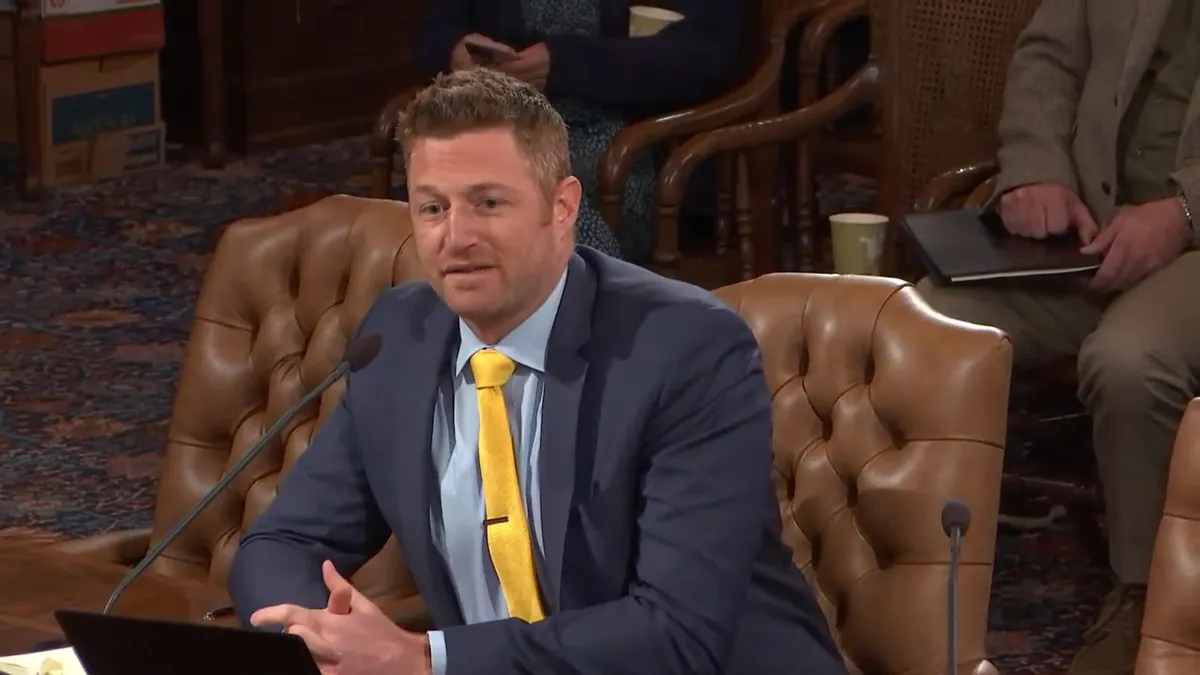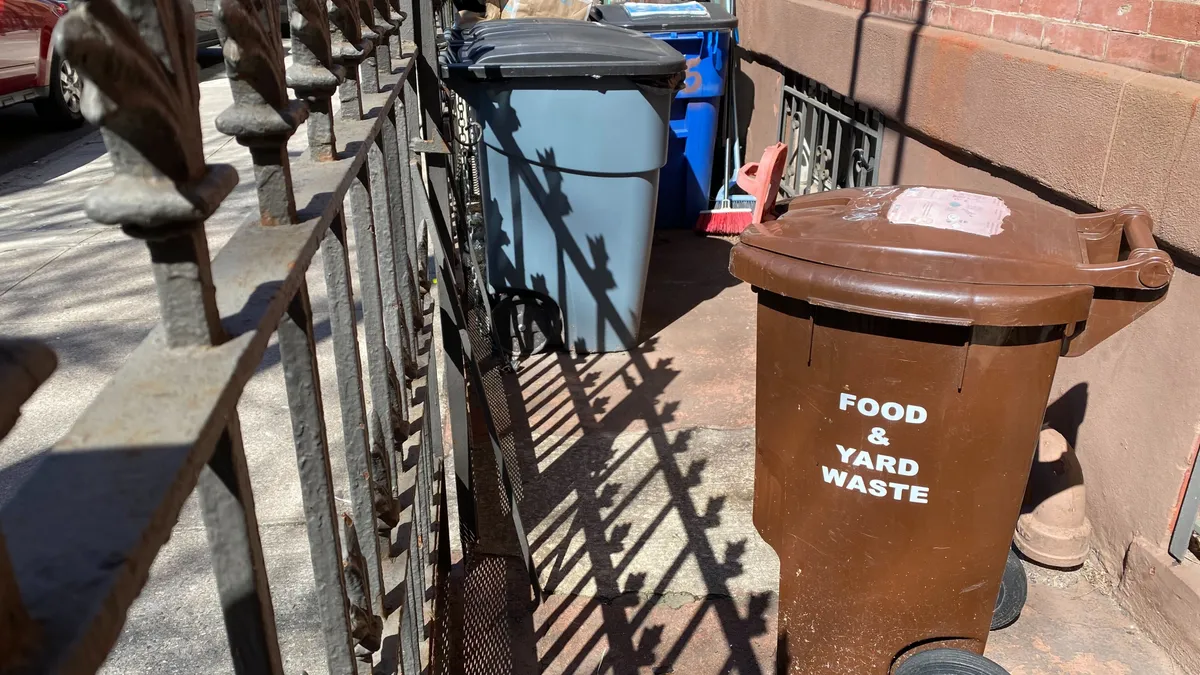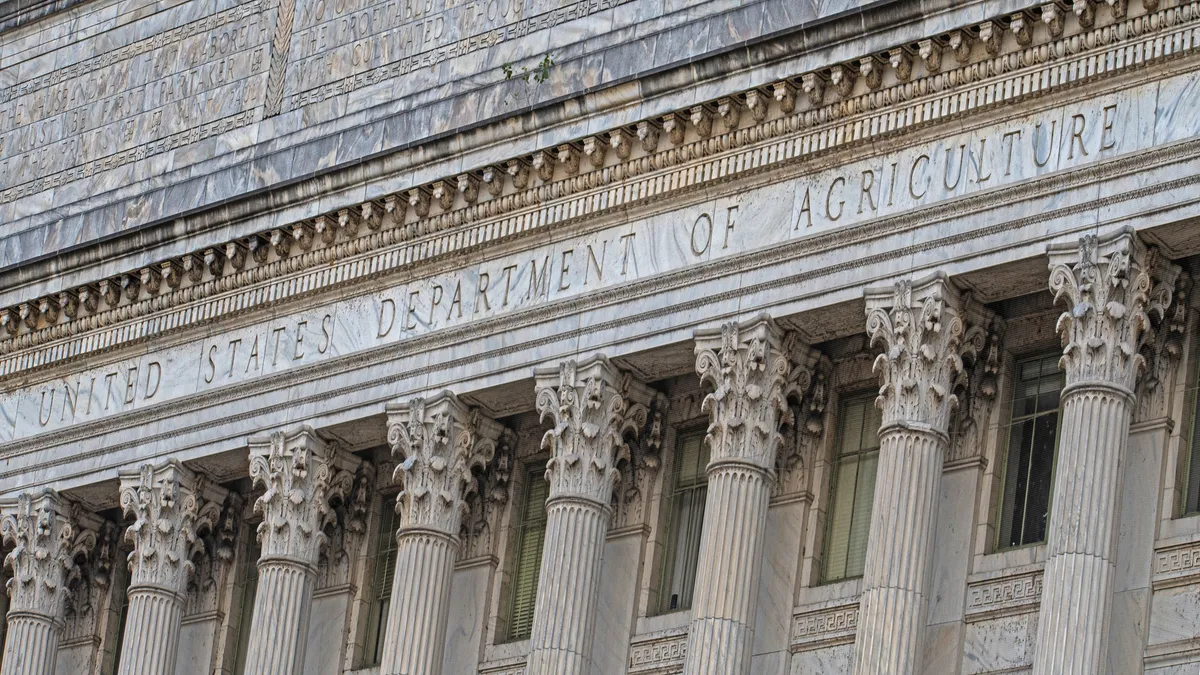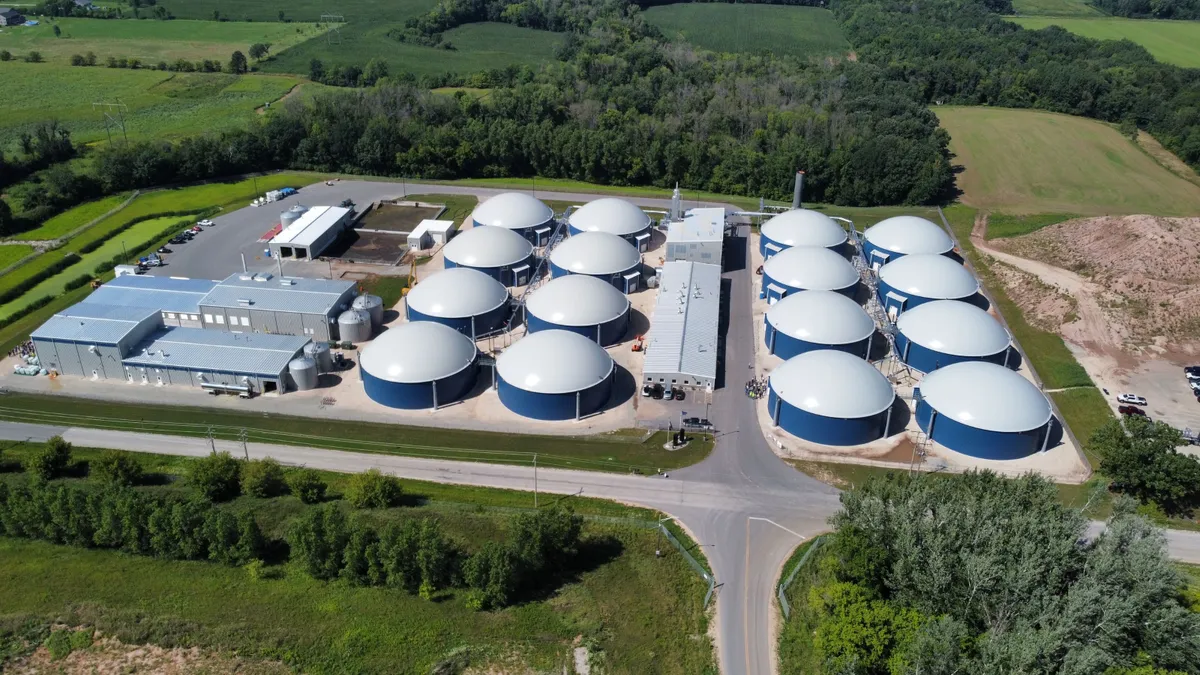Budget cuts to New York City’s community composting program are “unacceptable,” Council Member Shaun Abreu, the new chair of the city’s Sanitation and Solid Waste Management committee, said during his first hearing of the session Tuesday. Restoration of the program’s funding, along with other organics issues, containerization and oversight of the city’s commercial waste zones are priorities for his committee and the council, said Abreu, who serves a district in Northern Manhattan.
The city has a target to divert all reusable waste, including organics, from landfills and incinerators by 2030. But a reversal of the cuts and additional actions need to be taken to meet that goal, Abreu said.
“The city already spends hundreds of millions of dollars on organics right now by sending it to landfills and incinerators,” Abreu said at the hearing. “With organics collection set to go citywide by the end of this year, it's incumbent upon us to strengthen the programming that we know works and keep fighting for expansion, transparency, and stakeholder involvement in what could be the most successful organic diversion program in the country, if done right.”
The hearing came less than a month before the committee’s first discussion of the fiscal year 2025 budget, scheduled for March 14.
Mayor Eric Adams’ administration announced a series of budget cuts for fiscal year 2024 in November as a response to a perceived budget shortfall. Some of the proposed cuts, like a reduction in litter service, have been rolled back, but a delay in the rollout of curbside organics service for the Bronx and Staten Island and the zeroing out of $7 million in funding to the New York Community Composting program remains.
Despite budgetary constraints, organics collection in New York City is trending upward. The city reported collecting 105,600 tons of organics in fiscal year 2023 compared to 77,400 tons the prior year. Abreu said the rollout of new programs, including the city’s smart compost bins, was encouraging, but that New York still has a long way to go to surpass the diversion rate of cities like Seattle or Phoenix.
“We are behind,” Abreu said. “I think we need to considerably increase our composting, because that's what these programs were designed and intended for. I think there's a lot for us to do there.”
Community composting
The November budget cut led to layoffs at several organics groups. GrowNYC, which runs farmers market drop-off sites for organic waste, received stopgap donations from private sources, but that funding is expected to run out by May 20, ahead of when the new city budget begins in July.
During the hearing, Abreu questioned New York City’s Department of Sanitation officials about their support for the community composting program. Officials largely declined to opine on the future of the program, instead highlighting continuing organics measures like a sealed bid released by the city for additional organics processing infrastructure.
The cuts also meant the end of work on a new composting facility in Manhattan spearheaded by the Lower East Side Ecology Center. That project was supported by $2.1 million in funding from DSNY. When the project halted, design work had been completed on the site but construction had not yet begun, Kate Kitchener, director of DSNY’s Bureau of Recycling & Sustainability, said during the hearing. Abreu said funding for that facility would likely come up in future hearings, noting it was part of a broader push for green infrastructure projects in Manhattan.
Commercial waste zones and transfer stations
DSNY awarded contracts for its new commercial waste zone system in January. The announcement was a major step for the agency, which has been discussed for years and was required under a 2019 law.
But the agency still sees room for improvement of the system. Ahead of Tuesday’s hearing, DSNY requested the committee revisit New York’s 2013 commercial organics law. In the commercial waste zone system, haulers are required to offer recycling and organics collection at a lower cost than waste collection, but only certain commercial businesses are required to separate compostable material. DSNY said it would like to see an update “that would allow DSNY to have source separation at all commercial establishments, in line with the progress made in residential diversion.”
Abreu said he was open to revisiting the law. He also indicated he would be asking hard questions about the contracts awarded in the initial rollout of the waste zone system, following controversy. A hearing on the system could come as soon as April, Abreu said.
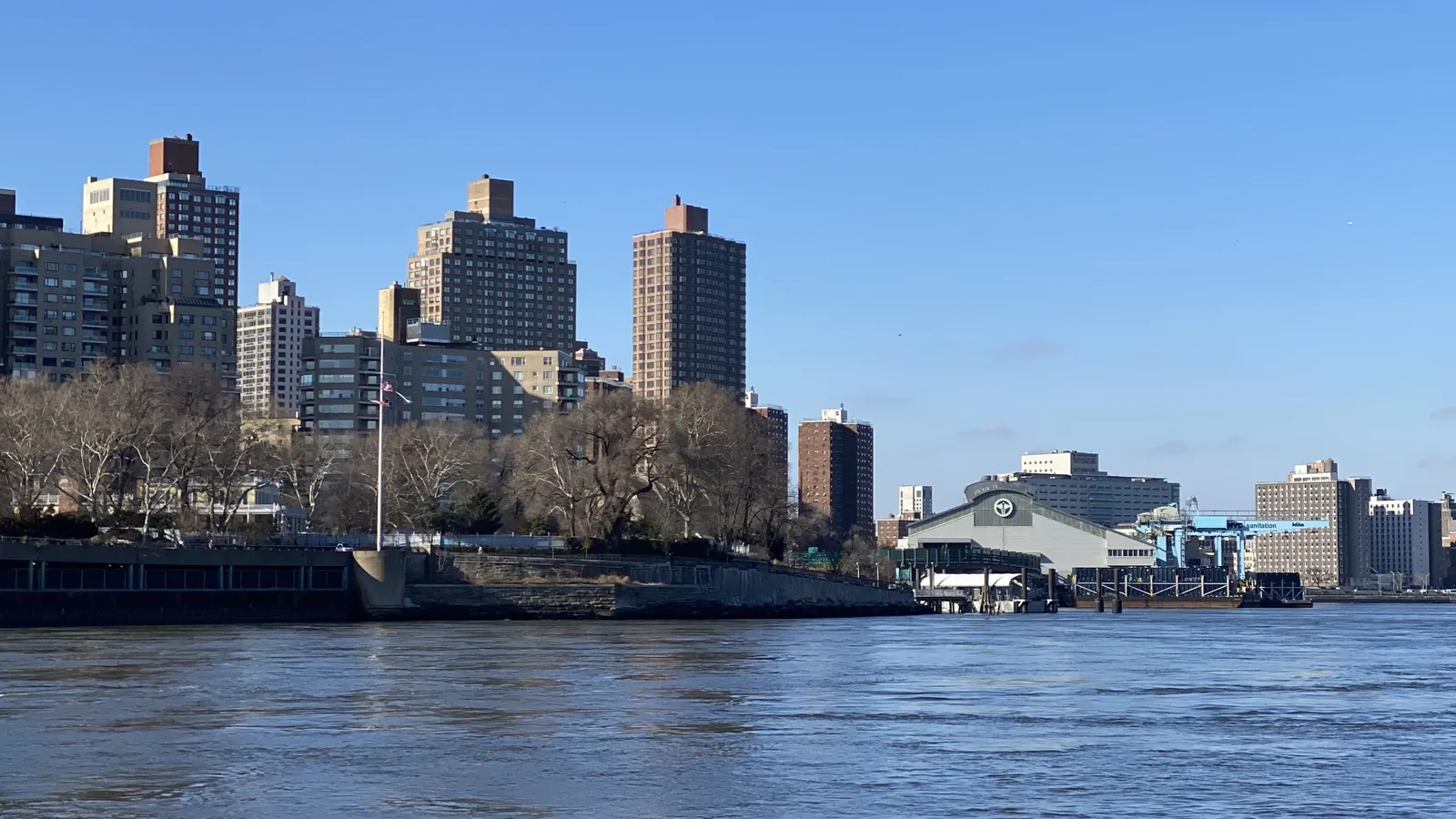
During the hearing, DSNY officials also said they studied the use of the city's rail and marine transfer stations when they began outreach for commercial waste zones. They said they are "now in a place to look at that" analysis now that they've awarded waste zone contracts.
Council Member Sandy Nurse, the former chair of the sanitation committee, reintroduced a bill this year that would open up those facilities for private carters to tip. But DSNY officials expressed skepticism about the proposal, saying that they would likely need to add an overnight shift to the two facilities with remaining capacity, 91st Street Marine Transfer Station and Southwest Brooklyn Marine Transfer Station. Such added capacity could raise costs, they said.
Containerization
DSNY is currently running a containerization pilot in Abreu's district that requires all buildings with 31 or more units in an area of West Harlem to begin using large shared wheeled bins. It's part of the city's broader containerization efforts, which will grow next year to involve stationary containers collected by automated side loaders the city is currently procuring to handle the waste.
Abreu said initially his constituents had mixed feelings on the pilot, but he's been encouraged to see the containers get filled by residents taking out their trash in the mornings. He also noted that rat sightings were down 68% in the area that’s already become a part of the pilot.
“We don't want to have people having to walk through mountains of trash in bags on the street,” Abreu said. “It's an outdated practice and it's time that we get up with the times.”
Anaerobic digestion
Abreu also took issue with the city’s current management of organics. Currently, roughly 80% of the organics collected by DSNY through curbside collection in Brooklyn or Queens or the city’s smart bins goes toward anaerobic digestion or codigestion, while the rest goes toward composting, officials said at the hearing.
Upgrades to the Staten Island composting facility also finished in January. The site can now accept up to 82,500 tons of compostable material annually, per DSNY. In fiscal year 2023, the site accepted about 31,000 tons of waste — 26,000 tons of which came from commercial landscapers, officials said.
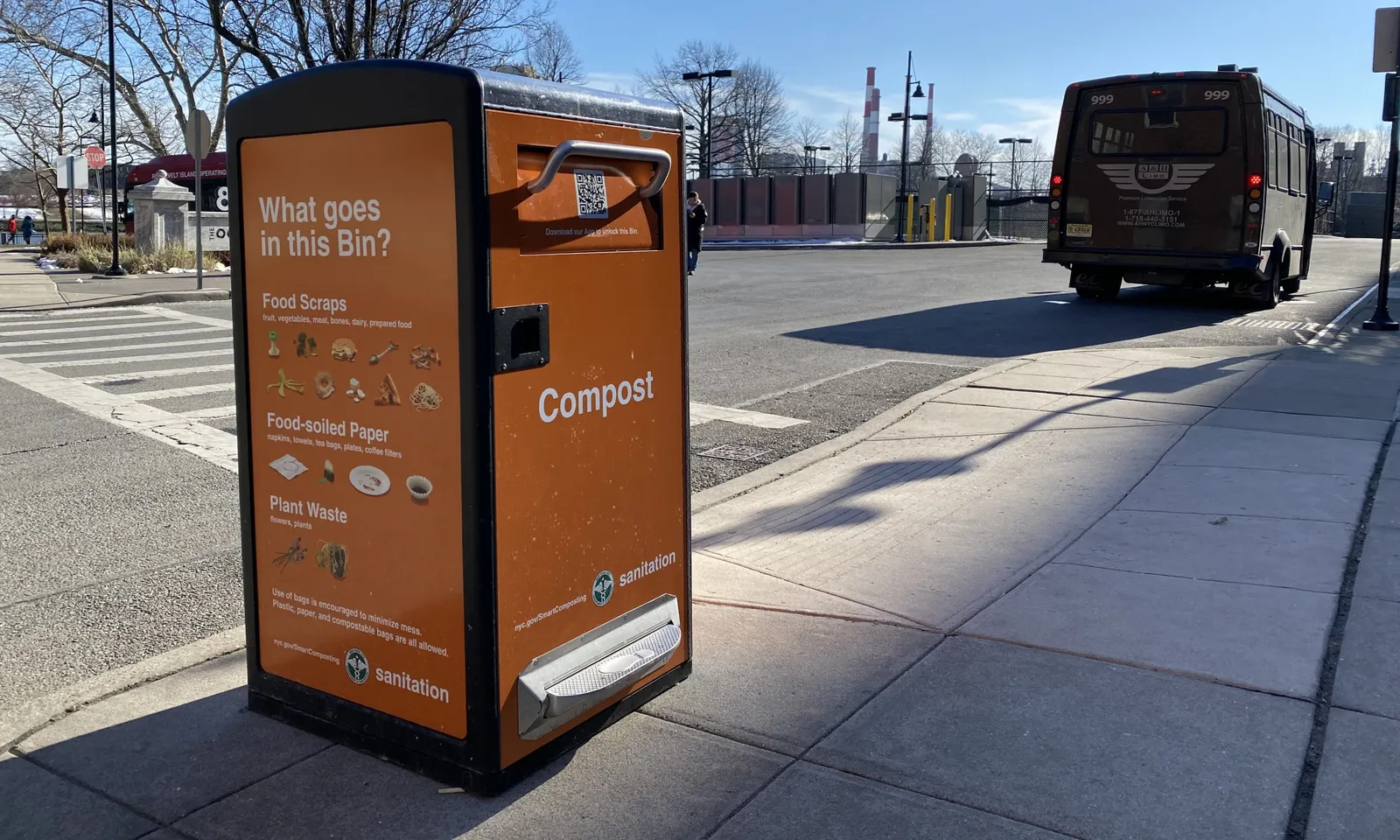
Abreu said he was concerned the agency is misleading residents by labeling its bins with the word “compost” when so little of the material is being used for such a process.
“If the messaging should be broader than that, maybe that would be more informative for my constituents,” Abreu said in the hearing. “They think this is resulting in composting.”
DSNY Deputy Commissioner for Public Affairs Joshua Goodman said the “underlying basis” for the program is beneficial reuse, which anaerobic digestion also accomplishes. He noted composting is a term New Yorkers would be familiar with, while beneficial reuse is not.
Going forward, Goodman said the agency saw a continued role for anaerobic digestion as a means of managing the material, noting that the process takes up far less space than traditional composting facilities.
“There’s got to be a role of both for beneficial reuse,” he said.











